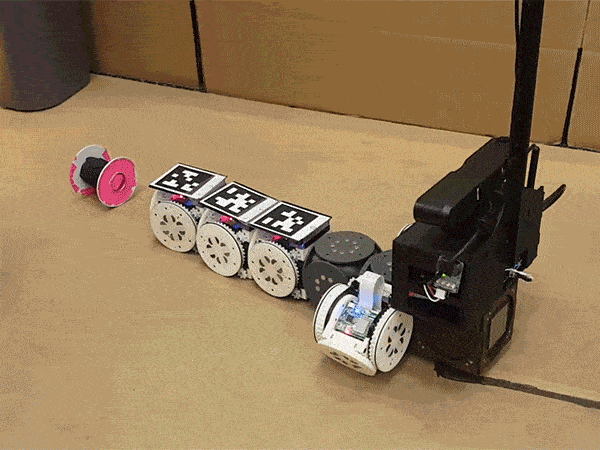When you’ve got a hammer, everything looks like a nail, but the world starts to look more interesting if your hammer can change shape.
For the builders of a class of robots called modular self-reconfigurable robots (MSRR), shape-shifting is the first step toward endowing robots with an animal-like adaptability to unknown situations. “The question of autonomy becomes more complicated, more interesting” when robots can change themselves to meet changing circumstances, said roboticist Hadas Kress-Gazit of Cornell University.
The key to achieving adaptability for robots rests in centralized sensory processing, environmental perception, and decision-making software, Kress-Gazit and colleagues report this week in a new paper in Science Robotics. The authors claim their new work represents the first time a modular robot has autonomously solved problems by reconfiguring in response to a changing environment. To achieve that, they built strict limitations into both the environment and the robot’s behaviors.
Self-reconfigurable robots date back about three decades, to the era of Transformers, said Mark Yim of the University of Pennsylvania, another author on the study, during a press conference with Kress-Gazit. “The robotics community has been making a lot of progress in understanding the environment,” he said. “The thing that we are doing [that is] new here is understanding the capabilities of the robot.”
In other words: Robot, know thyself. The robot they used for their experiments is known as SMORES-EP, and is composed of any number of cubelike modules that clip to each other in different ways using magnets. Most MSRRs are decentralized, with each module contributing equally to both the planning (through its software) and execution (through its hardware). They also have the ability to separate into a swarm or join into a single object. The team reported on a decentralized version of SMORES-EP earlier this year in Autonomous Robots.
But in the new study, the researchers attached a webcam on a small mast to one of the robot’s modules, giving it a Sauron-like eye with which to see itself and a central processor with which to command all the attached modules.
To prepare the robot for the test, the team built a software library of possible actions, such as driving or collecting an object, and the shape the robot would need to adopt to complete the action.
Next, the team designed three laboratory challenges for the robot that involved identifying colored and tagged objects in a test area littered with obstacles, and moving the objects around. In one case, the robot had to reach into a tunnel. In another, it had to stick a stamp high up on a box.
To simplify things, the team also stored in the robot’s software library predefined classifications of the test environments. So the robot had to recognize and categorize the objects and obstacles it encountered from a limited set of possibilities (tunnel, stairs, and so on), not from an infinite set, as it would in the real world. That setup made it likelier the robot would succeed at the tests reported in the study.
During the tests, the robot’s planning software took information from the camera about the test environment and used its library to decide which configuration to use in attempting each task. The team showed that the Sauron-equipped robot could complete each task during multiple trials, and while they did not compare it directly to a decentralized version of itself, they did make note of the system’s points of failure.
The team calculated that most errors (just over 40 percent) that did occur during the tests were low-level hardware issues, such as actuator failures. The next most problematic area was perception, which accounted for about a quarter of the failures, followed by human errors.
In previous work by this group, the robots focused on changing their environments by moving objects and building ramps (see“Simple Robots Perform Complex Tasks With Environmental Modifications”).
The ability of the robotic system to integrate perception, high-level planning, and modular hardware is the main step forward in this research, says roboticist Pinhas Ben-Tzvi of Virginia Tech, in Blacksburg: “Given a high-level task specification, a modular robot autonomously explores an unknown environment, decides when and how to reconfigure, and manipulates objects to complete its task.”
The authors write that they could make future systems more robust by incorporating more sensor information from low-level components (such as a wheel that detects higher-than-anticipated steps on a staircase) into the planning software.
An open-ended environment such as a search-and-rescue bot might encounter will be trickier and require more sophisticated computing, says Mauro Dragone of Heriot-Watt University in Edinburgh, United Kingdom: “I think the next step in this system should be to test in an actually challenging, and not structured and previously engineered, environment—to show the real value of the system.”
Lucas Laursen is a journalist covering global development by way of science and technology with special interest in energy and agriculture. He has lived in and reported from the United States, United Kingdom, Switzerland, and Mexico.



